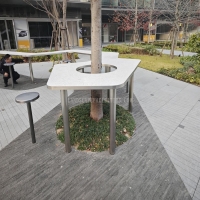Welcome to the website for landscape facilities products and knowledge.
How does the trash can’s design support the use of waste level sensors?
The integration of waste level sensors into trash cans has revolutionized waste management, but their effectiveness heavily depends on the bin's design. Modern trash cans are engineered with specific features to support sensor functionality, ensuring accurate and efficient waste monitoring.
First, the shape and material of the bin play a crucial role. Smooth, cylindrical designs minimize obstructions, allowing sensors to detect waste levels uniformly. Transparent or semi-transparent materials, like high-grade plastics, enable optical sensors to function optimally by reducing interference.
Second, the internal structure is often optimized for sensor placement. Strategic compartments or ridges ensure sensors are positioned at ideal heights to avoid false readings from unevenly distributed waste. Some designs even incorporate adjustable sensor mounts to accommodate varying trash types.
Additionally, smart bins often feature modular designs, allowing easy sensor upgrades or replacements. This adaptability ensures long-term compatibility with evolving sensor technologies.
Lastly, ergonomic lids and openings prevent debris from blocking sensors, while waterproof casings protect sensitive electronics from moisture damage.
By prioritizing these design elements, manufacturers create trash cans that maximize sensor accuracy, contributing to smarter, more sustainable waste management systems.
Related search:

Recommendation
An outdoor bar counter with stainless steel and terrazzo materials in an irregular shape